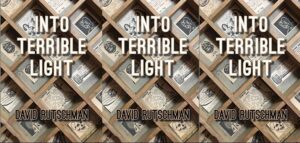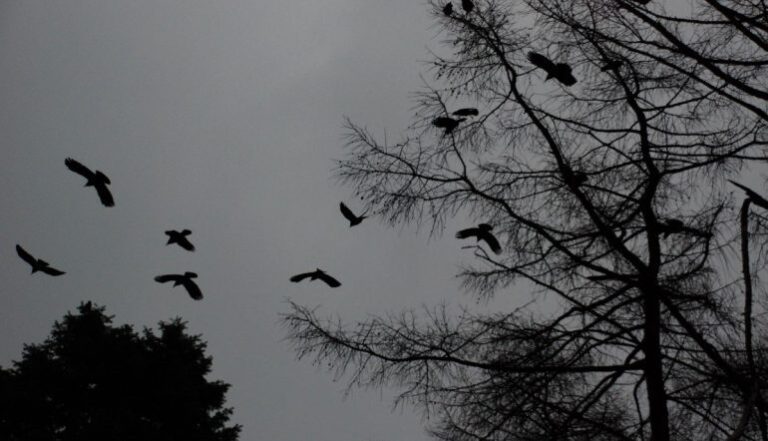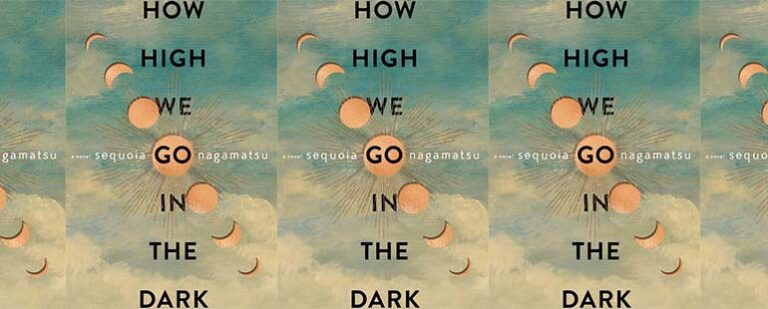Real-Life Character Development, Or the Challenge Of David Rutschman’s Into Terrible Light

Fictional characters model the human range, sometimes embodying layers and dimensions that inspire readers to rise to their own occasions or to communicate greater emotional depths. They may deepen readers’ empathetic capacity, as J.K. Rowling suggests, or illustrate the search for an inner space, or person, who understands more than they do, as Renee Gladman speaks of her narrators. Beyond being engaging or complex characters, the emperors, donkeys, roosters, and everyday humans in David Rutschman’s Into Terrible Light(Forklift Books, 2017), charge readers to acknowledge the tender and fearful aspects of being the ruling animal.
This debut story collection opens with two quotations. The first is by Fugazi:
The answer is there, the answer is there
but there
is not a fixed position.
The second is by the founder of the Sōtō Zen school, Eihei Dogen:
Consider whether any being or any world
could ever be excluded from right now.
Both suggest that this book’s scope extends beyond the page.
Rutschman is a Sōtō Zen priest and hospice counselor, biographical details that encourage reading his stories as koans or parables, but they draw on an old sense of the word “parable,” taken from the ancient Greek root, παραβολή, meaning to place side by side, in comparison, or analogy. Stories with titles like “Fatherhood,” “Thomas Jefferson,” and “The Devil’s New Red Axe” ask readers to slide in for a moment beside their protagonists, under the bright light of awareness that exposes them on the page.
It can be a disconcerting experience, as when we find ourselves in traffic, or in line, suddenly full of anger as irrational as it is real. We know ourselves capable at such times of fury, but has it ever blazed hot enough to hit a stray dog with a milk crate? Or, can we imagine happening on such a dog who has been beaten to death, as the protagonist Richard does in “Voices of Smoke”? Would we cover it with our coat, or turn away with a gasp? Would we get a shovel to bury it, or lower the zipper of our pants to urinate on its carcass, as he considers doing, if not for the windows of a school shining behind him like so many eyes?
No, Richard is no model of virtue, or virtuous potential, but an illustration of the institutions that govern or fail to govern us. Once behind closed doors, he pushes the woman he lives with into the kitchen table, as if he cannot help returning violence with violence. A believable rather than redemptive figure, Richard embodies the process by which we would control others, and ourselves.
I first encountered Rutschman’s writing in The Sun, through “The Hogs, The Sow, The Wind,” which is the fourth story in this collection. I admired his characters’ consciousness that they suffer the slings and arrows not only of fate but also of their own smallness.
In the opening paragraph, the hogs and sow are faced with a dire predicament. The old man who brings food to them has died and left them trapped in the pen to fend for themselves as best they can. We might imagine cleverer options than the ones they invent, or we might imagine that we would respond with less or more generosity, but any surety we might grasp dissolves by the end. As the hog realizes, it is too hard to keep greed, gratitude, or desperation from morphing into something else.
This collection moves between realist and fabulist modes, traditional length and micro fictions. When I reached out to Rutschman for an interview for Zone 3 journal, he listed a wide range of authors among his formal influences, including Clarice Lispector, Homer, Julio Cortázar, and Angela Carter. He cited the inspiration of religious writers as well as the rabbits in Watership Down, saying: “Little by little, I began to allow myself to write stranger stuff, pieces that didn’t necessarily center ordinary ways of knowing.”
Instead, he centers knowing “a little something about the surging power of subconscious drives,” as in his story “Poor, Lonely Donkey.” He centers knowing how to respond to a baby left alone on a blanket in a park with a few toys in “The Baby.” He centers knowing the responsibility of hearing a young man shout in Spanish, “Tell Nora Gutierrez—I am Wilson Gutierrez—tell Nora,” while soldiers drag him away, in “Simple.”
“Simple” is a more complicated story than the title suggests, considering that two stories bear this title. The second “Simple” shares the same introductory information as the first: “Buenos Aires, 1979,” but the full text of the second story contains only Gutierriez’s full name and birthdate in a font that recedes on the page. Given that Rutschman was born in 1974, and lived in Argentina until he was five, he may have witnessed this scene himself. The line between imagined and real worlds blur, as the story serves as a means of telling Nora Gutierrez what happened to her husband.
Regardless of whether “Simple” is fiction or not, finally, every story in Into Terrible Light makes as insistent a request as Gutierrez’s—to look at what is happening or has happened, and to act. Observation is the action, when we position ourselves alongside these characters and recognize them in ourselves. It is easier to find ennobling traits than repulsive ones, but both can move us, as if by red-inked workshop comments, to develop greater awareness of our own character and our dynamism, freedom, and complex humanity.


